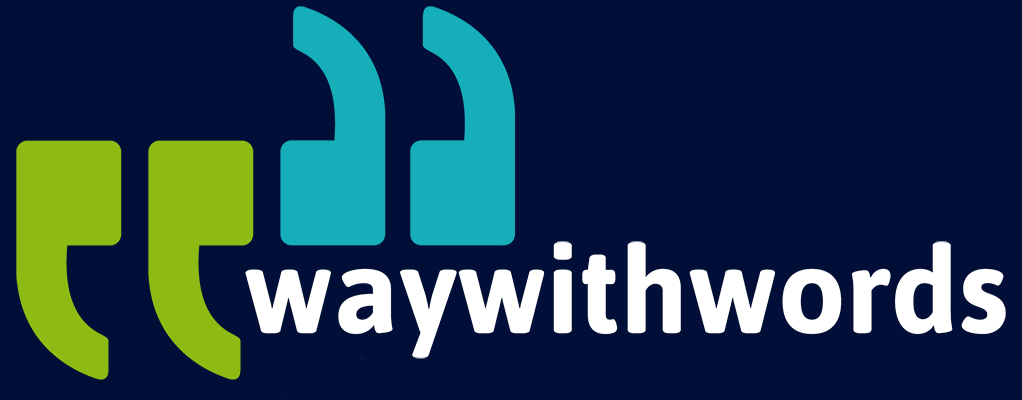Comprehensive Solutions: Captioning & Transcription Services
Are There Captioning Services That Offer Transcription?
For content creators, educators, media professionals, legal specialists and corporate trainers, accessibility and clarity are no longer optional extras—they’re central to effective communication strategies. As digital content becomes increasingly dominant in shaping modern learning environments, business practices, entertainment formats, and corporate training initiatives, there is a growing expectation for materials to be inclusive, easy to comprehend, and well-structured.
Audiences and stakeholders alike now require content that caters to diverse needs, including those related to language, hearing ability, and learning preferences. This heightened demand for clarity and usability has led to a significant increase in the uptake of captioning and transcription services, particularly where these are offered in tandem to provide a comprehensive communication solution or live streams.
This rising demand prompts a natural question: Are there captioning services that offer transcription as well? The short answer is yes—and in many cases, choosing a provider that offers both can improve your workflow, elevate content quality, and enhance user accessibility in one strategic move.
Professionals across a wide range of industries often ask:
- What’s the difference between captioning and transcription, and do I need both for my project?
- Is it more efficient or cost-effective to source both services from a single provider?
- What legal obligations or accessibility requirements can be met by offering both captions and transcripts?
This short guide explores these questions and offers insight into how combined captioning services—which integrate high-quality transcripts with synchronised captions—can transform how your content is consumed, shared, and stored. With practical applications across legal, educational, media, and corporate sectors, understanding and implementing cohesive transcription solutions is no longer just a good idea—it’s a strategic advantage.
Combined Captioning & Transcription
1. Understanding Captioning and Transcription: Definitions and Differences
Although the terms are often used interchangeably, captioning and transcription refer to distinct yet complementary services. Transcription involves the conversion of spoken audio into written text. It can be presented verbatim—capturing every word, pause, and utterance—or in an edited format that removes filler words and makes the content more readable. Transcripts are widely used for documentation, academic research, meeting minutes, legal records, and content repurposing. They provide an accessible, searchable format for reviewing audio or video content offline.
Captioning, on the other hand, consists of synchronised text displayed on-screen alongside video or audio content. Captions can include not only speech but also relevant non-verbal information such as [laughter], [applause], and [background noise], offering a richer contextual experience for viewers. There are two primary types: closed captions, which users can enable or disable, and open captions, which are permanently embedded into the video.
The value of combining these services lies in the dual accessibility they offer. While captions support real-time comprehension and viewing, transcripts serve as detailed, downloadable references that support review, study, and long-term archival. This dual delivery model is especially valuable for professionals working in education, legal contexts, and compliance-heavy industries. When executed together by a single provider, these services result in greater accuracy, improved consistency, and enhanced usability.
By understanding the distinct functions and use cases of captioning and transcription, professionals can better determine when and how to deploy each. A unified approach using captioning and transcription strategically not only addresses accessibility requirements but also elevates the overall quality and functionality of digital content.

2. Benefits of Combined Captioning and Transcription Services
Using a single provider to manage both transcription and captioning services provides a host of benefits that go far beyond convenience. Chief among these is workflow efficiency. When both services are delivered by the same team, project management becomes significantly simpler. The time spent coordinating between multiple vendors, reformatting files, or clarifying terminology is eliminated. This results in faster turnaround times and reduced risk of error or misalignment.
Combined captioning services also improve quality and consistency. When one provider handles the full project, they can ensure that the transcript and captions are aligned in style, tone, and accuracy. This consistency is especially important for projects involving technical jargon, multiple speakers, or industry-specific language. A single team becomes familiar with your content and expectations, producing outputs that are better tailored to your needs.
Cost efficiency is another important factor. Bundled services are often more economical than ordering transcription and captioning separately. Providers can streamline internal resources and pass those savings on to clients, making this approach attractive for regular users of video and audio content.
From an accessibility perspective, providing both captions and transcripts is often a legal or policy requirement. International guidelines such as WCAG 2.1 and national legislation like the UK Equality Act or the US ADA specify the need for accessible media, and transcripts combined with captions help meet these obligations. They also serve different user groups—captions for those consuming visual content, and transcripts for those who prefer or require text-based review.
Ultimately, comprehensive transcription solutions that include captioning give content creators a flexible, scalable way to enhance their audience’s experience, meet compliance goals, and streamline production processes.
3. Captioning and Transcription Software Tools: What’s Available?
Thanks to recent advances in speech recognition and automation, a wide range of software platforms now offer integrated captioning and transcription tools. These range from fully automated systems to human-reviewed services, and each offers unique advantages depending on the context of use, the quality of the input, and the audience requirements.
For projects demanding a high degree of accuracy—such as legal proceedings, medical documentation, or academic research—human transcription services like Way With Words, GoTranscript, or TranscribeMe are ideal. These platforms employ professional transcribers who understand contextual language, regional accents, and technical jargon. Many of them also offer synchronised caption files as part of a combined service.
For faster or more scalable projects, AI-driven platforms such as Otter.ai, Trint, Descript, and Temi provide automated transcription solutions that also generate caption files. These services allow users to upload media files and receive timecoded transcriptions and caption formats such as SRT or VTT. Many include collaborative editing tools, cloud-based storage, and support for multilingual transcription.
Some platforms are also designed for seamless integration with content editing and publishing software. Adobe Premiere Pro, Final Cut Pro, and Camtasia, for instance, allow editors to import caption files directly and publish content with embedded text.
The growing sophistication of these tools means that even non-technical users can benefit from high-quality captioning and transcription, especially when they opt for hybrid services that combine AI speed with human accuracy. For businesses and professionals seeking both cost-effectiveness and reliability, these tools represent a powerful way to manage large-scale content production while ensuring accessibility.
4. Legal and Accessibility Considerations
Incorporating captioning and transcription into your content isn’t merely good practice—it’s often a legal requirement. Laws and regulations worldwide mandate the provision of accessible communication, particularly in sectors that serve the public, government, or education. Failing to meet these requirements can result in legal action, reputational harm, and a loss of inclusivity for potential users.
In the United Kingdom, the Equality Act 2010 requires service providers to make reasonable adjustments to ensure people with disabilities can access their content and services. For digital media, this often means providing both captions for video and transcripts for audio-based communication. Similarly, the Public Sector Bodies (Websites and Mobile Applications) Accessibility Regulations 2018 apply to public services and educational institutions, setting clear requirements for multimedia accessibility.
Internationally, the Americans with Disabilities Act (ADA) and Section 508 of the Rehabilitation Act in the United States mandate that organisations provide equivalent access to individuals with disabilities. The European Union’s Accessibility Act also aligns with these principles, encouraging consistent standards across member states.
By offering combined captioning services, content creators not only meet these legal requirements but also demonstrate a strong commitment to inclusion. This can lead to broader audience reach, improved engagement metrics, and increased trust from users who rely on accessible content.
Moreover, consistent implementation of these services reduces the need for future retrofitting, saving time and resources. It also facilitates smoother audits and reduces the risk of compliance failures. Ultimately, addressing legal and accessibility needs through integrated transcription solutions makes good ethical, operational, and business sense.
5. Industries That Benefit from Combined Services
The value of captioning and transcription extends across a wide variety of sectors, each with unique needs but shared priorities: clarity, compliance, and communication. From higher education to corporate training, from healthcare to media broadcasting, combining these services delivers significant advantages for both providers and their audiences.
In the education sector, institutions use captioned lecture videos and accompanying transcripts to support diverse learning needs. Students benefit from being able to review content at their own pace, while instructors are able to meet accessibility obligations with less administrative effort. Recorded seminars, e-learning modules, and MOOCs all gain from dual-format delivery.
Legal professionals rely on combined captioning services for clarity and accuracy. Court recordings, depositions, and compliance audits often require both a visual record and an accompanying text file. Accurate, synchronised content supports evidence presentation, discovery processes, and post-event analysis.
Media organisations use these services to expand their audience reach. Captions help improve video accessibility on social platforms and international channels, while transcripts provide raw material for content repurposing—articles, blog posts, and translated versions.
Corporate teams use captioning and transcription to train employees, document internal meetings, and onboard new hires. With remote and hybrid work on the rise, clear and accessible training materials are essential for productivity and consistency.
Healthcare providers use these tools to document consultations, produce patient education materials, and streamline clinical communications. Multilingual capabilities and confidentiality options ensure that both local and international needs are met.
In every one of these contexts, transcription solutions that include captioning add structure, reliability, and versatility to content, helping organisations manage information, meet legal obligations, and engage audiences more effectively.

6. Integration with Learning Management Systems (LMS) and Video Platforms
One of the most powerful developments in captioning and transcription services is their integration with widely used digital platforms. Learning Management Systems (LMS) such as Moodle, Blackboard, and Canvas have made it easier for educators to deliver accessible course content by supporting captioned videos and attached transcripts. Similarly, corporate platforms like Microsoft Teams, Zoom, and Google Meet have embraced accessibility by offering automated transcription and live captioning features.
These integrations significantly reduce the workload for content producers and administrators. Instead of having to manually upload caption files or distribute transcripts separately, these functions can now be automated or built into the publishing workflow. For example, a recorded Zoom meeting can be transcribed automatically and posted with captions to an LMS platform within minutes. This seamless process ensures accessibility is maintained without creating additional administrative burden.
For video content creators, integrations with platforms such as YouTube, Vimeo, and Wistia allow direct uploads of caption files or the generation of automatic captions that can then be edited. These features help creators meet accessibility guidelines while boosting engagement. Captioned videos consistently show better viewer retention and broader audience reach, especially in noisy environments or among users who prefer watching videos on mute.
Advanced video management systems like Kaltura and Panopto also support simultaneous display of captions and transcript downloads, which is especially valuable in blended learning and corporate training environments. These systems enable searchability within video archives by indexing transcript content, which allows users to locate specific topics or discussions without watching entire videos.
The interoperability of combined captioning services with major content platforms ensures that accessibility is not a standalone task but an embedded, efficient, and scalable solution. This empowers organisations to offer content that meets both legal requirements and user expectations while remaining easy to manage.
7. Improving Searchability and SEO with Transcripts and Captions
Beyond accessibility, one of the lesser-known but increasingly valuable benefits of captioning and transcription is their contribution to search engine optimisation (SEO). Search engines like Google cannot directly index audio or video content, but they can and do index text. By adding transcripts and caption files to your website or video platforms, you significantly increase your content’s discoverability.
Searchable transcripts allow search engines to read and rank your multimedia content based on keywords, phrases, and topic relevance. For example, a podcast episode transcribed and published alongside its audio becomes instantly more accessible to those searching for its themes. Similarly, caption files uploaded with a video on YouTube enhance that video’s likelihood of appearing in relevant search results, especially when viewers use voice or text search based on phrases spoken in the content.
Captions also improve on-site searchability. When a company archives training videos, webinars, or conference recordings, having transcripts available makes it easy to locate specific segments by searching for key terms. This saves valuable time for internal users and increases the utility of recorded resources.
From a marketing standpoint, captions and transcripts enable content repurposing. A single video can generate multiple outputs: blog posts, social media snippets, email content, and infographics—all based on the transcript. This multiplies the return on investment for content production.
SEO experts increasingly recommend integrating transcription solutions into content strategies to build visibility, especially for video-heavy platforms. In an environment where digital visibility is highly competitive, using captions and transcripts as structured data assets is a simple yet effective way to improve content reach, engagement, and long-term discoverability.
8. Multilingual and Localised Captioning and Transcription
As content becomes more global, the demand for multilingual and localised captioning and transcription services is on the rise. Reaching audiences across different regions and cultures requires more than just a direct translation—it calls for contextual adaptation, accuracy, and cultural sensitivity. Combined services that include multilingual capabilities are especially valuable for companies operating internationally or institutions engaging diverse populations.
Multilingual transcription begins with accurate documentation in the source language. Once the original transcript is created, professional translators or localisation experts adapt the text to target languages. This may involve rephrasing idioms, adjusting terminology, and respecting cultural conventions. Captions generated from these localised transcripts can then be synchronised with the video, ensuring that the visual pacing matches linguistic structure.
Localisation also supports accessibility in countries where specific legal standards apply. For instance, government-funded media in Canada must offer bilingual captions in English and French. Likewise, EU member states have individual language accessibility requirements that content creators must comply with.
Platforms like Amara, CaptionHub, and Way With Words provide robust multilingual support and can handle everything from real-time multilingual captioning to subtitling for international releases. These services often include tools for reviewing and managing translations across teams, reducing error rates and improving turnaround times.
Multilingual transcription solutions also support corporate learning, marketing, and compliance. A global company can produce a single video in English and use its transcript to generate captions in ten languages, each tailored to regional offices. This promotes brand consistency and ensures knowledge sharing across linguistic barriers.
By choosing providers that offer combined services with multilingual capabilities, organisations save time, reduce duplication of effort, and deliver a more polished, inclusive product.
9. Custom Formatting and Speaker Identification in Combined Services
One of the often-overlooked advantages of combined captioning services is the ability to customise formatting and speaker identification. Different industries and use cases require different styles of transcription and caption display. Whether it’s legal proceedings, educational lectures, corporate meetings, or media interviews, having a solution tailored to your specific needs is essential for usability and compliance.
Custom formatting may involve structuring transcripts by speaker, applying timecodes at regular intervals, highlighting keywords, or including visual cues. For example, academic institutions may prefer paragraph formatting with simplified language for accessibility, while legal firms might require precise, timestamped records with verbatim speech and speaker attribution.
Speaker identification is another critical component, especially in multi-speaker scenarios. Proper labelling not only improves readability but also ensures accountability and clarity. This is particularly valuable in legal and HR contexts, where accurate representation of who said what—and when—can have serious implications.
When captions are synchronised with customised transcripts, the result is a more coherent user experience. Viewers can follow along with the video while referring to a well-structured text document for deeper understanding or offline review. This integration enhances retention, comprehension, and engagement.
Leading providers of transcription solutions offer a wide range of export formats including Word, PDF, TXT, SRT, and VTT. These formats can be used across editing tools, legal document systems, e-learning platforms, and publishing environments.
Customisation also supports brand consistency and internal communication standards. For businesses producing large volumes of content, using standardised transcript and caption templates improves quality control and speeds up review cycles. Ultimately, tailored formatting ensures your content is both functional and professional.
10. Case Studies of Successful Combined Captioning Services
Real-world examples illustrate how organisations across sectors have successfully implemented captioning and transcription together to improve engagement, meet compliance goals, and increase content value. These case studies provide compelling evidence of how integrated solutions deliver measurable results.
Case Study 1: Corporate Training Firm (United Kingdom) A London-based leadership development company offering remote and hybrid training programmes sought to improve course accessibility and learner retention. They partnered with a service provider offering combined captioning services. Each video module was delivered with open captions and downloadable transcripts, formatted with speaker labels and timecodes. The results were immediate—learner retention increased by 42%, while helpdesk queries about unclear content dropped by more than half. Employees reported feeling more engaged and better supported.
Case Study 2: Higher Education Institution (South Africa) A university in Cape Town introduced captioning and transcription for all recorded lectures during a remote learning initiative. Captioned videos helped students follow lectures in real time, while transcripts served as study aids and revision tools. Within one semester, student satisfaction scores improved by 25%, and course completion rates increased by 18%. Lecturers noted fewer requests for clarification, and academic support staff found transcripts helpful in tutoring and accessibility support.
Case Study 3: Media Production Agency (Canada) A media agency producing multilingual documentaries integrated transcription and captioning to improve localisation and global distribution. They used transcripts to generate subtitles in five languages and embedded captions into regional versions of the final films. With these enhancements, the documentaries reached new audiences across Europe and Latin America, with viewership doubling on streaming platforms.
Each of these cases underscores the adaptability and effectiveness of integrated transcription solutions. By addressing multiple needs—accessibility, clarity, compliance, and localisation—organisations unlock greater value from every piece of content they create.
Key Tips for Using Captioning and Transcription Services
- Bundle services for efficiency and consistency –Select a provider that offers both transcription and captioning as a combined service. This ensures uniformity in style and accuracy across formats while reducing administrative effort.
- Use human-reviewed services for accuracy-critical content – For legal, medical, and research materials, rely on services that include human transcription to ensure terminology, tone, and meaning are faithfully captured.
- Plan for multi-format delivery – Ensure your provider can deliver outputs in various formats—SRT, VTT, Word, PDF—so you can repurpose your content across platforms, from LMSs to broadcast media.
- Integrate with your existing tools – Choose services that work smoothly with your platforms—whether you’re using Zoom, YouTube, Moodle, or Adobe Premiere—to reduce duplication of work.
- Keep compliance and accessibility top of mind – Familiarise yourself with relevant laws and accessibility standards. Ensure both captions and transcripts are part of your publishing workflow to meet obligations.
From enhancing accessibility to boosting SEO, captioning and transcription services offer far-reaching benefits across industries. When delivered as a combined package, they not only streamline workflows but also improve consistency, save costs, and increase the usability of multimedia content. Whether you’re producing a lecture series, onboarding materials, legal recordings, or international documentaries, using combined captioning services ensures your content is clear, compliant, and impactful.
Throughout this short guide, we’ve examined the definitions and differences between captioning and transcription, explored the tools and platforms that enable their integration, and reviewed industry-specific use cases. We’ve also looked at legal requirements, SEO benefits, multilingual capabilities, and case studies demonstrating real-world success. The recurring theme is clear: combining these services delivers measurable value.
By choosing transcription solutions that also offer captioning, organisations meet accessibility requirements, enhance communication, and future-proof their content. As expectations for accessible content grow and digital formats evolve, adopting an integrated approach becomes not just advantageous—but essential.
Resources
Further Captioning Resources
Transcription (service) – Wikipedia: This resource explains transcription services, their applications, and how they complement captioning in different sectors.
Way With Words: Captioning Services – Way With Words: Get accurate, synchronised captioning and transcription services tailored for legal, educational, media, and business needs.

